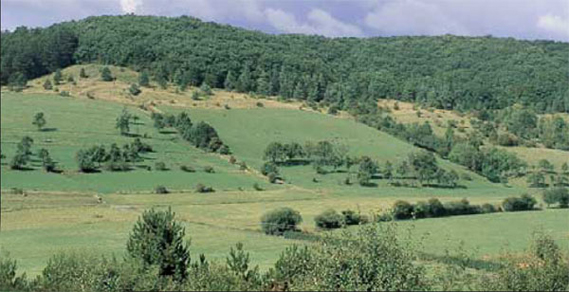The geology of the surrounding landscape.
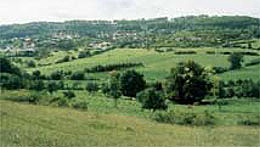
View from the Aarnescht to the “Grünewald”.
The region of Niederanven is specific for an abrupt change of the underground geological feature. This passage from the Luxembourg Sandstone layer to the Keuper layer can be seen easily on the surface and is responsible for the special features of the site.
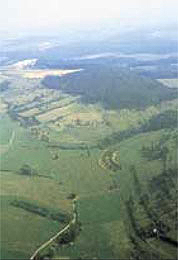
The Aarnescht in the middle of the hilly landscape.
The Luxembourg Sandstone layer (li2) forms a tableland covered by a natural grown beech grove. On the east side; the tableland is limited by the transition point of the Keuper layer (km3), on whose ground is extending a wide open hilly landscape, cultivated since ever.
The geology of the Aarnescht
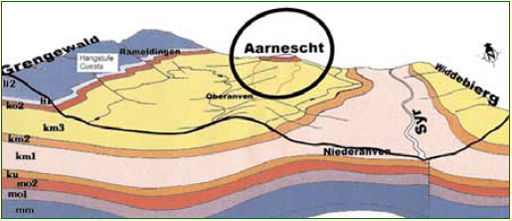
Geological layers:
li2: Luxemburger Sandstone
ku: Lower Keuper
li1: Marls-Layers
mo2: Ceratites-Layers
ko2: Rhaetian
mo1: Crinoidea-Layers
km3: Upper Triassic
mm: Gypsite
km2: Reed sandstone
km1: Pseudomorphosenkeuper
The geological profile of the Aarnescht shows that the underground is nearly completely composed by stony marl sediments, rocks were formed in the Mesozoic time, when the dinosaurs were still there (approximately 200 millions of years ago). During these years different layers were added to the marl sediment layer as for example the red rhetian marl (ko2(), the grey psiloceras planorbis (li1) and the yellow Luxembourg Sandstone layer (li2). On the north side of the Aarnescht these layers are still recovering and protecting the marl sediments from the natural erosion. As for the rest of the Aarnescht, wind and rain did erode the thick layers with the years and the compact marl sediments are exposed on the surface again.
Compact marl sediments
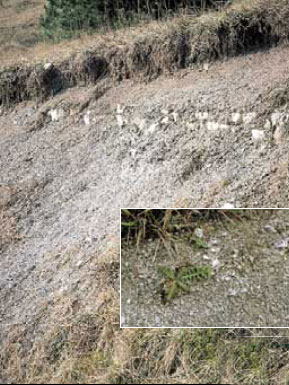 The compact marl sediments are composed by thick clay rocks and brake rapidly into sharp fragments. Then they can easily been blown away by the wind and waters and laid down on other places.
The compact marl sediments are composed by thick clay rocks and brake rapidly into sharp fragments. Then they can easily been blown away by the wind and waters and laid down on other places.
During a hiking tour over the Aarnescht you can find those bare open grounds, eroded over the time. You recognise them by their grey colour, typical for compact marl sediments.

